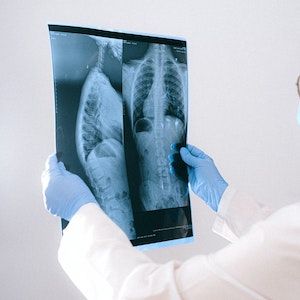News
Article
SGLT2 Inhibitors Did Not Increase Fracture Risk in Postmenopausal Patients with T2D
Author(s):
The use of SGLT2 inhibitors was associated with similar or lower risks of fractures as incretin-based drugs, even in the high-risk patient population.
Credit: Anna Shvets/Pexels

The use of sodium-glucose cotransporter-2 (SGLT2) inhibitors was associated with a similar risk of fracture as incretin-based drugs among postmenopausal individuals with type 2 diabetes (T2D), according to new research.1
Analyses showed the risk of fractures was not increased with the use of SGLT2 inhibitors and remained consistent regardless of the incretin-based comparator drug, including dipeptidyl-peptidase 4 inhibitors (DPP4i) and glucagon-like peptide 1 receptor agonists (GLP-1 RA).
“These findings indicate that SGLT2i has either similar or lower risks of fractures than incretin-based drugs even in a population at higher risk for fractures, providing reassurance to and helping health care professionals with their clinical decision-making,” wrote the investigative team, led by Ju-Young Shin, PhD, School of Pharmacy, Sungkyunkwan University.
A heightened risk of fractures in postmenopausal individuals with T2D has been linked to the interaction of elevated blood glucose levels and declining estrogen levels due to menopause. These potential fracture risks are important for clinicians to consider when choosing an optimal pharmacologic regimen for glycemic control in these patients.2 Recent meta-analyses of trials have reported no significant associations between SGLT2i and fracture risk.
However, Shin and colleagues noted, to their knowledge, that no observational studies have assessed the association between their use and fracture risk in postmenopausal individuals with T2D.1 Given this gap in data, Shin and colleagues conducted a nationwide, population-based cohort study to separately compare SGLT2 inhibitors with incretin-based drugs in 2 independent cohorts: SGLT2 inhibitors vs. DPP4i and SGLT2 vs. GLP-1 RA.
The analysis used health administrative claims data from January 2013 - December 2020 obtained from the National Health Insurance Service in South Korea. All female individuals in the database aged 45 years or older were included in the analysis. The index date was the date of the first prescription of either SGLT2 inhibitor or comparator incretin-based drug from September 2014 to December 2020.
Of eligible participants, the investigative team excluded those with severe kidney impairment within the year prior to the index date, to consider for contraindication to SGLT2 inhibitors. Patients were followed up from the index date until the earlier outcome occurrence, drug discontinuation (90-day grace period), switch, death, or end of the study period.
Investigators confirmed the primary outcomes for the analysis were overall fractures, consisting of vertebral, hip, humerus, and distal radius fractures. Secondary outcomes included the invisible components of the primary composite outcome.
A total of 369,570 patients were chosen for the first cohort: 37,532 patients initiating SGLT2 inhibitors (mean age, 60.6 years) and 332,039 patients initiating DPP4 inhibitors (mean age, 66.0 years). For the second cohort, a total of 121,803 patients were selected: 113,622 patients initiating SGLT2 inhibitors (mean age, 61.4 years) and 8181 patients initiating GLP-1 RA (mean age, 62.5 years).
Those in the second cohort showed a higher prevalence of diabetes-related conditions, insulin usage, and more diabetic medication use, suggesting a more severe diabetic profile. Propensity score weighting and trimming left 37,530 patients initiating SGLT2i and 332,004 patients initiating DPP4i in the first cohort, while the second cohort had 111,835 patients initiating SGLT2i and 8177 patients initiating GLP-1 RA.
Upon analysis, in the first cohort, users of SGLT2 inhibitors and DPP4i yielded a weighted incidence of 1.41 and 1.81 events per 100 person-years for the overall fractures, respectively. The data corresponded to a 22% lower rate of incident overall fractures with SGLT2 inhibitors versus DPP4i (weighted hazard ratio [HR], 0.78; 95% CI, 0.72 - 0.84).
Over a mean follow-up of 1.43 years and 0.82 years, the weighted incidence of overall fractures was 1.67 per 100 person-years for SGLT2 inhibitors and 1.92 per 100 person-years for GLP-1 RA. Overall, the analysis showed the use of SGLT2 inhibitors compared with GLP-1 RA was not associated with an increased risk of fractures (weighted HR, 0.92; 95% CI, 0.68 - 1.24).
Similar trends for the secondary outcome were identified across both study cohorts where SGLT2 inhibitors did not increase the risk of fractures, regardless of the comparator drug. Results from subgroup and sensitivity analyses were consistent with the findings in the main analysis.
Shin and colleagues noted that SGLT2 inhibitors potentially disrupt calcium and phosphate homeostasis in serum, which could lead to detrimental effects on bone fragility. Given the decreased levels of estrogen in postmenopausal women, this risk has the potential to be further exacerbated, but more research is required to confirm this mechanism.
“Despite such biological plausibility, our results found a modest potential protective effect of SGLT2 inhibitors against overall fractures, which may be explained by the role of SGLT2i in the trajectory of impaired bone metabolism caused by the accumulation of advanced glycation end products in bone collagen fibers in advanced diabetes,” investigators wrote.
References
- Ko HY, Bea S, Jeong HE, et al. Sodium-Glucose Cotransporter 2 Inhibitors vs Incretin-Based Drugs and Risk of Fractures for Type 2 Diabetes. JAMA Netw Open. 2023;6(9):e2335797. doi:10.1001/jamanetworkopen.2023.35797
- Khosla S, Samakkarnthai P, Monroe DG, Farr JN. Update on the pathogenesis and treatment of skeletal fragility in type 2 diabetes mellitus. Nat Rev Endocrinol. 2021;17(11):685-697. doi:10.1038/s41574-021-00555-5PubMed





